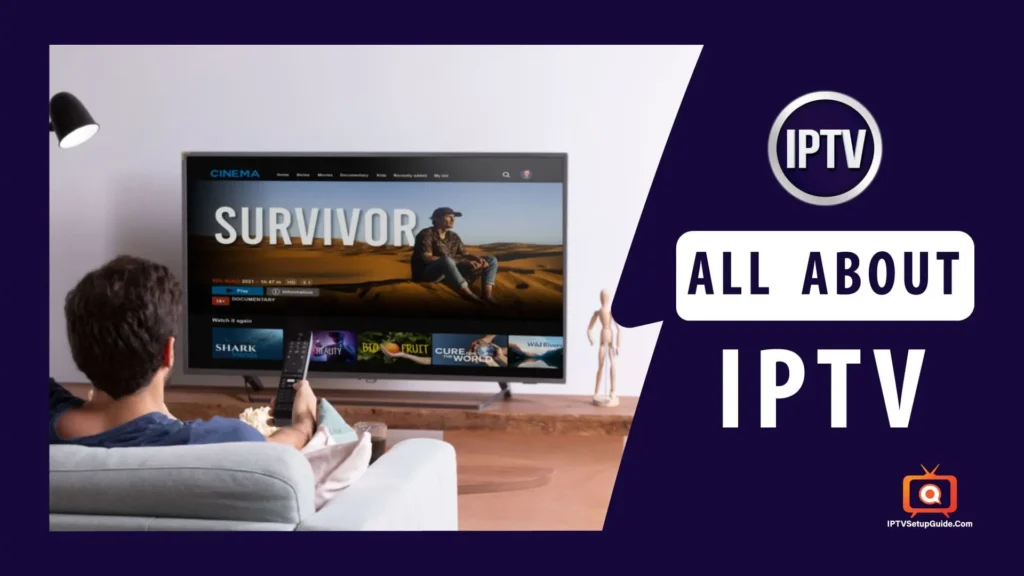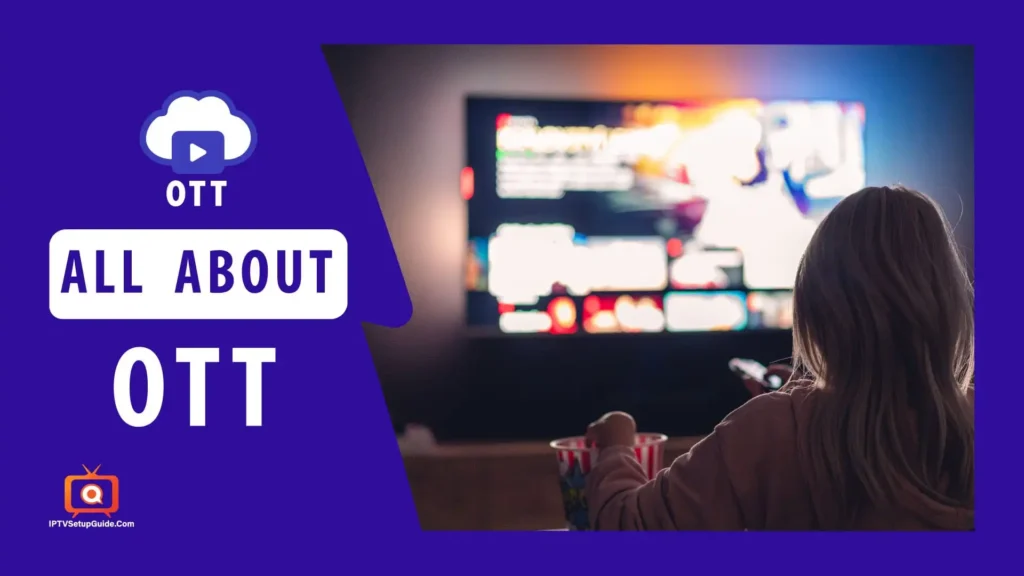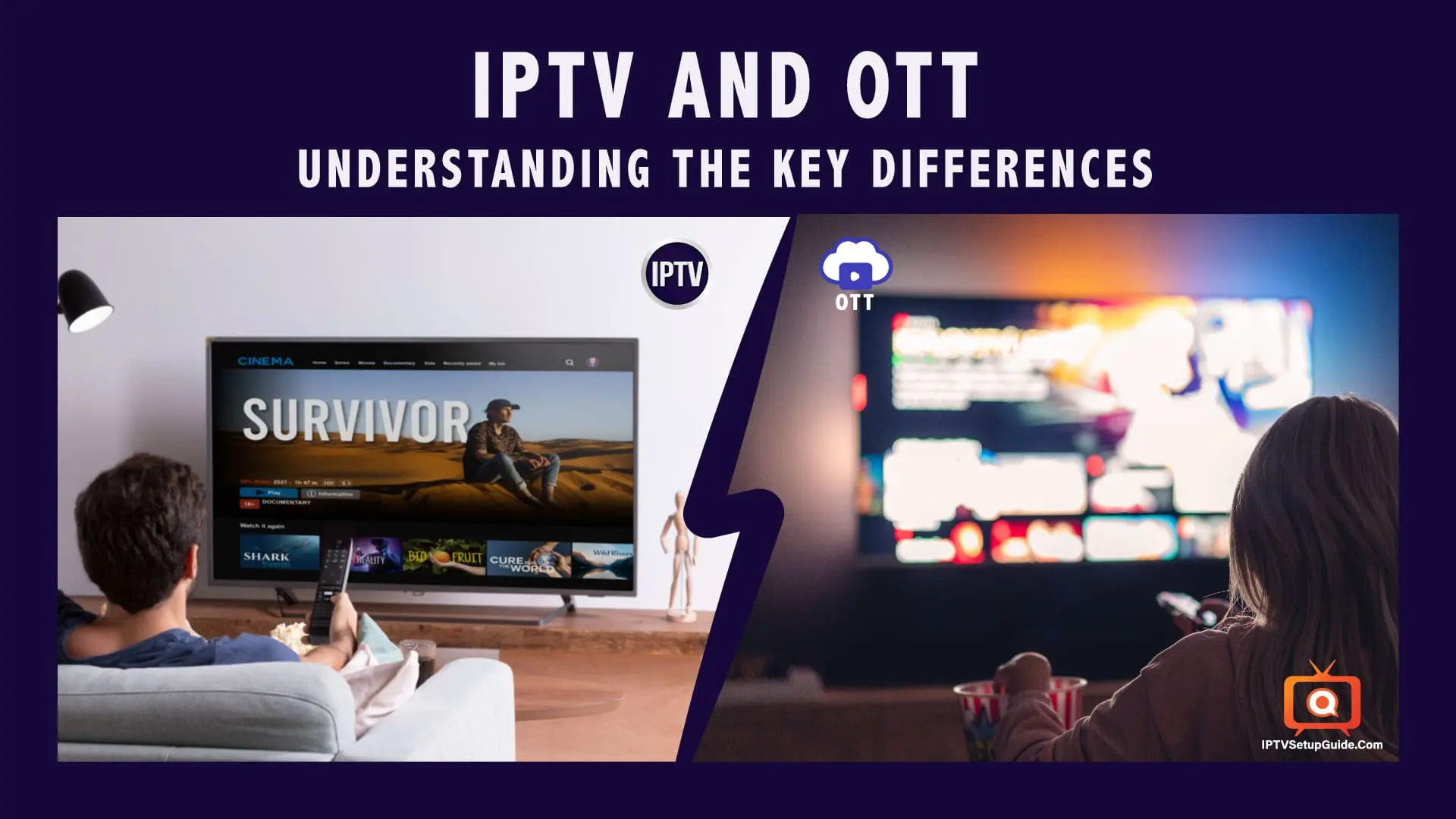In the ever-changing digital entertainment landscape, there has been a lot of focus on two acronyms, IPTV and OTT. This guide will shed light on the world of IPTV (Internet Protocol Television) and OTT (Over-The-Top) streaming, providing a clear understanding of these technologies. We’ll explore what IPTV and OTT have in common, explore the important differences between them, discuss their strengths and weaknesses, and provide answers to frequently asked questions. Ultimately, you’ll be well-equipped to make informed decisions about your streaming preferences.
What is IPTV?

IPTV or Internet Protocol Television is a technology that transmits television content over the Internet. It broadcasts TV signals over Internet networks, allowing viewers to access live TV, search content, and programming on connected devices Unlike traditional cable and satellite TV, IPTV operates on an IP-based network, providing greater flexibility and customization.
Features of IPTV:
- Live TV: IPTV enables live television streaming, including sports coverage, news, and real-time content.
- On-Demand Content: Users can access on-demand content, allowing them to watch their favorite shows, movies, or series at their convenience.
- Quality of Service: IPTV typically offers a superior viewing experience, with less buffering and improved picture and sound quality.
- Scheduled Recording: Many IPTV services offer scheduled recording features, enabling users to record live content for later viewing.
- Content Personalization: Content Personalization: Some IPTV services allow personalization, including playing your favorite playlists and channels for a personalized experience.
- Electronic Program Guide (EPG): IPTV often consists of EPGs, which offer program information, schedules, and descriptions, enhancing the person’s potential to browse and pick content material.
- Device Compatibility: IPTV services may be accessed on various gadgets, which include smart TVs, set-pinnacle packing containers, and committed IPTV apps.
- Parental Control: IPTV services often encompass parental manipulation functions, permitting dad and mom to restrict content material access for more youthful visitors.
Reliable IPTV Service Providers:
When it comes to selecting the most Popular IPTV carrier companies, it’s crucial to not forget different factors including channel services, streaming satisfaction, and customer service. Some pinnacle options inside the market, known for his or her reliability, consist of:
- MomIPTV.Com: Known for its large channel lineup and stable streaming pleasantness, MomIPTV.Com is a popular preference amongst IPTV lovers.
- NikonIPTV.Me: NikonIPTV.I give a good-sized array of channels, together with high-definition content material. Their commitment to carrier reliability has earned them a dedicated user base.
- IPTVService.Shop: IPTVService.Shop provides dependable IPTV solutions with a focal point on purchaser satisfaction. With a huge selection of channels, it’s a dependable preference for IPTV fanatics.
These providers have established their reliability and commitment to presenting quality IPTV offerings to visitors.
What is OTT?

OTT, or Over-The-Top, refers to the delivery of media content material over the net, bypassing conventional cable or satellite TV offerings. It includes streaming offerings like Netflix, Hulu, and Amazon Prime Video. OTT content material may be accessed without delay through the internet on diverse gadgets, without the need for a cable or satellite TV for pc subscription.
Features of OTT:
- On-Demand Content: OTT platforms excel at providing on-demand content, making it easier for viewers to find what they want when they want it.
- Cross-Platform Compatibility: OTT services can be accessed on a wide range of devices, from smartphones and tablets to smart TVs and gaming consoles
- Personalization: OTT platforms offer personalized recommendations and content discovery, helping users discover new shows and movies based on their viewing history.
- Original Content: Many OTT operators produce their original content, including TV shows and movies, offering exclusive and varied programming.
- Subscription and Free-Tier Options: OTT Services typically offer both subscription and ad-based free content, which generates more information.
- Offline Viewing: Some OTT platforms allow users to download content with offline viewing, perfect for viewing without an internet connection.
- Streaming Quality Options: Users can often adjust the streaming quality to suit their internet connection, conserve bandwidth, or boost the quality as needed.
- Global Reach: OTT services are accessible internationally, offering a variety of content irrespective of location.
Popular OTT Platforms:
OTT platforms have gained in popularity and offer a variety of features. There are three well-known OTT platforms:
- Netflix: Netflix is the global leader in streaming services, offering a vast library of movies, TV series, and original content. Its personalized recommendation system tailors content to suit individual preferences.
- Hulu: Hulu is known for its huge library of current TV shows and recent shows shortly after they air. It also offers a variety of original content and live TV shows.
- Amazon Prime Video: Amazon Prime Video provides entry to a numerous choice of movies, TV collections, and Amazon Originals. Subscribers also can revel in additional advantages via an Amazon Prime club, which include unfastened transport and extra.
These OTT platforms offer massive content libraries and numerous features that cater to distinctive preferences and viewing habits.
Key Differences between IPTV and OTT:
While both IPTV and OTT contain streaming content material over the net, they have distinct variations:
- Content Delivery: IPTV is predicated on committed, managed networks to deliver content material, making sure the carrier. OTT, on the other hand, utilizes the public net, which can also result in occasional fine variations.
- Content Source: IPTV more often than not offers content material from conventional TV broadcasters or provider providers. OTT sources its content material from various online systems and content material creators, frequently presenting a broader variety of alternatives.
- Live TV: IPTV excels at handing over stay TV, which includes sports activities events, and information, with minimum delays. OTT services can also have barely longer latency, which can affect the live viewing enjoyment.
- Personalization: OTT services are recognized for his or her personalized pointers and content material discovery algorithms. IPTV may also provide personalization, however, it may vary depending on the service provider.
- Device Compatibility: OTT offerings are regularly well suited with an extensive range of gadgets, from smartphones to clever TVs. IPTV can be restricted to certain devices, such as devoted set-top bins or smart TVs with IPTV support.
IPTV vs OTT: Which is better?
Determining whether IPTV or OTT is best depends on your specific needs and preferences. IPTV enhances the quality of live TV, making it suitable for sports fans and those who prioritize real-time content. OTT, on the other hand, offers on-demand content and more personalization features, making it a strong choice for viewers looking for variety and convenience. You need to consider factors such as content type and the device that you use for the streaming when making the decision.
Frequently Asked Questions:
No. IPTV streams content over the Internet, while cable TV relies on a physical cable connection.
IPTV may require a dedicated set-top box or compatible smart TV. OTT can be accessed on a variety of devices with an internet connection, including smartphones, tablets, and smart TVs.
Popular IPTV services are ForestIPTV.Com and NixonIPTV.Com.Notable OTT services include Netflix, Hulu, Amazon Prime Video, and Disney+.
Conclusion:
In today’s entertainment landscape, IPTV and OTT represent two distinct modes of content delivery, each with unique strengths and characteristics. IPTV excels at delivering live TV with little time consumption, making it ideal for sports and news enthusiasts. In contrast, OTT offers a large and diverse library of on-demand features, supplemented by personalized recommendations.
The choice between IPTV and OTT ultimately depends on your preferences and priorities as a viewer. Whether you prioritize real-time content or on-demand flexibility, understanding the key differences between these technologies empowers you to make informed decisions in the pursuit of digital interests.
